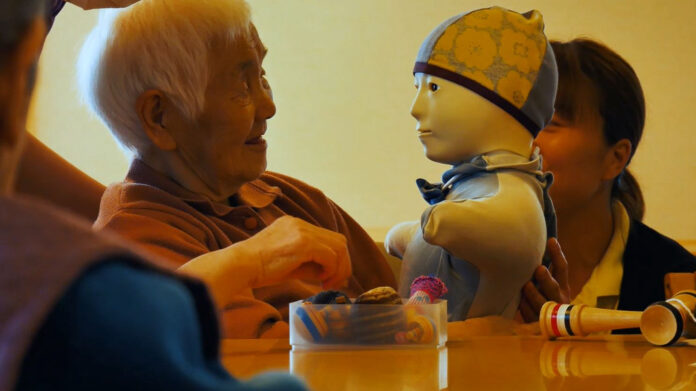It is a humanoid robot called Telenoid. It has the body size of a small child, an expressionless silicone face and nubs for hands and feet wrapped in soft fabric.
Telenoid cannot speak on its own. It is in fact controlled by nursing home staff, who communicate with the seniors remotely through it using a microphone and camera. It then mimics the user’s speech with a few movements.
Developed by Professor Hiroshi Ishiguro at Osaka University, Telenoid is the product of a growing robotic industry in Japan specializing in elderly care. At the request of the Miyagi Prefecture government, Urayasu was among the first facilities to test them out.
Despite first impressions, Telenoid’s minimal appearance is specially designed to help patients with dementia project their feelings toward someone familiar onto the robot. It also helps family and care home staff monitor and communicate with the elders when they are not able to be present.
Sasaki, who currently oversees the welfare of 132 elders, welcomed the development. “The ways of working are really changing,” she said. “I look forward to trying new techniques to help the elderly.”
A survey conducted by a Tokyo-based senior care provider in 2018 found that more than 80 percent of respondents held a positive attitude toward the use of robots in nursing care.
Analysis:
While researching, I was not expecting to stumble upon an article about robots aiding in the care of aging adults. It’s interesting to see technology successfully being used in this manner. I’m not quite sure how I feel about artificial intelligence replicating human connection, but perhaps with its success, it’s a concept I should be more open-minded with. The use of robots would allow distant family members to feel more connected to their loved ones.
“Robots Take Part in Japan’s Elderly Care.” 404, news.cgtn.com/news/2019-06-28/Robots-take-part-in-Japan-s-elderly-care-HTtkQOc5Tq/index.html.




